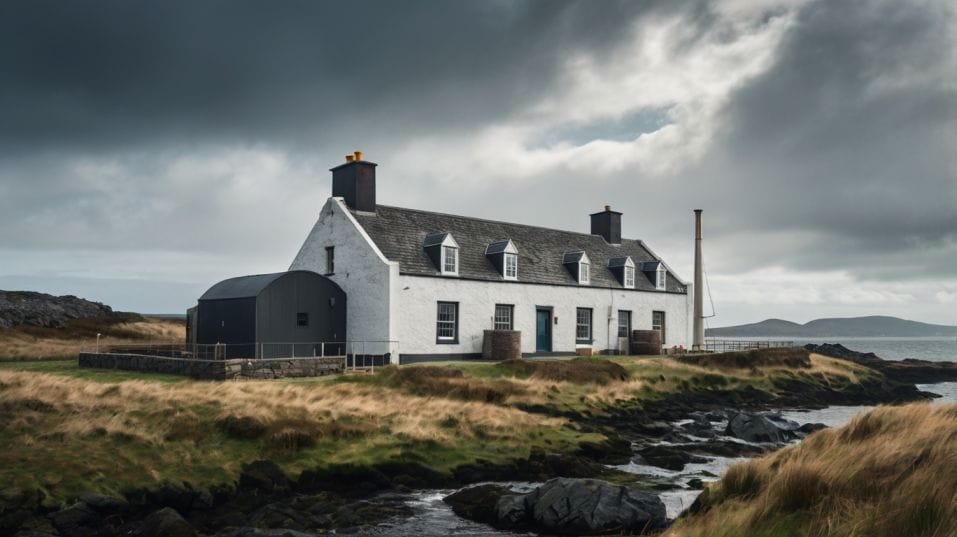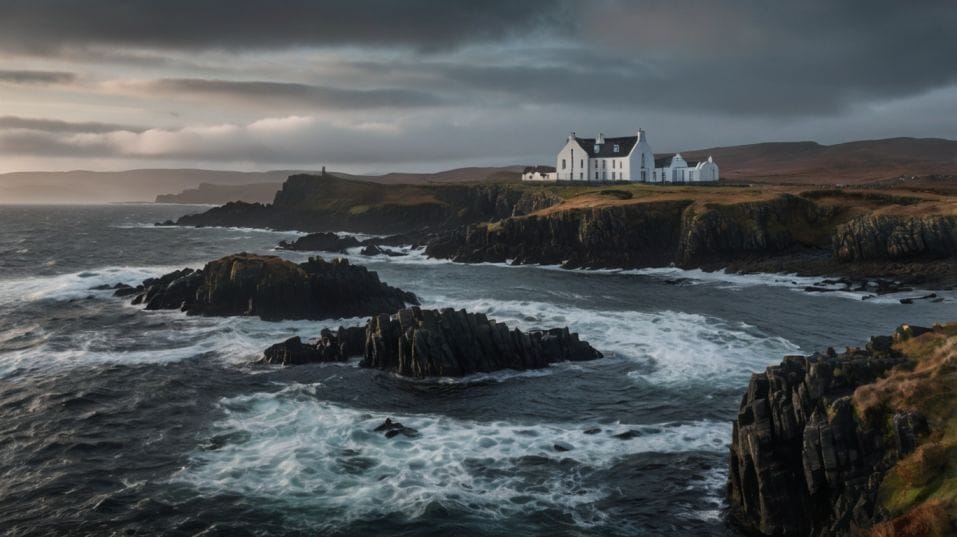The Smoky Isles: Why Islay Is So Famous
Discover why Islay matters. Learn how smoke, place, and process shape whiskey—and sharpen your palate with every sip. Start tasting smarter.

What if one whiskey region could rewire your palate—and reset how you think about flavor? Welcome to Islay. This windswept Scottish island isn’t just known for smoky drams. It’s where smoke gets sophisticated.
Peat here isn’t a gimmick—it’s a craft. Every sip teaches you something. If you’re early in your whiskey journey and want to taste with real confidence, start with Islay. It’s bold, complex, and unforgettable. And that’s exactly why it matters.
The Myth and the Method Behind the Smoke
Let’s get this out of the way: yes, Islay whiskeys are peated. But “peaty” is not a flavor note. It’s a process. And if you want to understand Islay—and become a sharper whiskey drinker in the process—you need to start thinking like a distiller.
Peat is decomposed organic matter, cut from the ground, dried, and burned as fuel. On Islay, it’s often used to dry the germinated barley during the malting phase.
That peat smoke clings to the damp grain, embedding phenols—smoky, medicinal, earthy compounds—directly into the starch that will eventually become your whiskey.
But here’s what beginners miss: peat intensity is only one variable. The type of peat (heather-rich, bog-heavy, or coastal), the burn temperature, and how long the malt is exposed to smoke all shape the final result.
Some distilleries cold-smoke barley for 24 hours. Others hit it hot and fast. These choices define whether the smoke hits you like ash, sea brine, BBQ, or hospital gauze.
And even once the smoke is baked in, the distillation, maturation, and blending decisions determine how that smoke expresses itself in the glass.
Fermentation times, yeast strains, copper contact, reflux—all of it bends the profile. Think of peat like a powerful pigment. The distiller is still holding the brush.

Islay Is More Than Smoke
Talk to someone who really knows Islay whiskey, and they won’t just rattle off “smoky, salty, medicinal.”
They'll talk about fermentation funk, cask-driven sweetness, the interplay of spirit weight and wood influence. Because the best Islay whiskeys are layered. They're not monologues—they’re conversations.
You’ll find lemon oil, sea spray, crushed shells, raw sugar, eucalyptus, dried fruits, tar, mint, toasted nuts, and even light florals.
Islay whiskeys often flirt with opposites: clean and dirty, sweet and bitter, rich and sharp. That complexity doesn’t come from marketing—it comes from real chemistry. And from distillers who don’t treat you like you need training wheels.
Learning to taste Islay whiskey means learning to sit with tension. Smoke and salt might dominate your first sip, but they’re just the scaffolding. What matters is what’s built on top.
Climate, Culture, and Why Islay Tastes Like It Does
A whiskey’s origin isn’t just a fun fact—it’s a fingerprint. Islay is a windswept island, battered by Atlantic storms and steeped in maritime air. Distilleries hug the coast. Some use water drawn from peat-rich streams.
Warehouses sit meters from the sea. These environmental factors create slow, oxidative aging conditions that subtly but consistently influence the final whiskey.
But it’s not just the weather. Islay’s culture of craft matters. This island has only a few thousand residents—and nine working distilleries (with more on the way). People here aren’t just making a product.
They’re carrying a tradition. That often means longer fermentations, slower distillations, hands-on processes. You're not drinking a factory output. You're tasting technique that’s been honed across generations.
That culture also affects how the whiskey is designed to be enjoyed. Islay whiskeys aren’t engineered to be “easy.” They’re unapologetic.
You’re expected to meet them where they are. Which means the more you engage—intentionally, repeatedly—the more you’re rewarded.
Sharpening Your Palate With Islay
Here’s the truth: tasting Islay whiskey well will make you a better taster across the board. These spirits force you to focus. They punch through palate fatigue. They show you what flavor structure feels like—not just what it tastes like.
Nose First
Next time you pour an Islay dram, slow down. Before you even taste it, explore the nose in stages. Start at a distance. What hits you first?
Smoke, probably—but is it sharp like chimney soot or rounded like charred wood? Then nose it closer. Can you pick out herbal notes, vanilla, seaweed, citrus, antiseptic, or even distant florals?
Mouthfeel and Finish
When you taste, don’t just clock the smoke. Where is the sweetness? Is the mouthfeel light, oily, waxy, or creamy?
How long does the finish hold, and does it evolve or just burn out? This kind of tasting—specific, curious, unhurried—is how you train your brain to recognize structure.
And the better you get with structure, the more clearly you’ll taste any whiskey, from Highland to Japanese to American single malt.
Building a Smarter Collection
Islay whiskeys deserve a place in any serious collection—not because they’re collectible, but because they’re revealing. They test your palate, challenge your preferences, and teach you to calibrate your expectations.
Start with a few well-made bottles across the spectrum: maybe one that's aggressively peated, one that's gentler but still coastal, one that's experiment-driven (think wine cask or longer fermentation).
Avoid chasing trophy bottles. Focus on building a range of experiences. Let your shelf teach you. Islay also helps you spot marketing noise.
If you can handle 40+ ppm phenols and still pick out toasted almond, dry sherry, or marshmallow in the mix, then you're not getting fooled by a label that says “smooth” or “rich.” You’re tasting with clarity. You’re collecting with a purpose.
Final Thoughts: Taste the Edge
Islay matters because it sharpens you. It doesn’t just offer strong flavors—it demands strong attention. You can’t sleepwalk through a smoky dram. You have to show up, stay curious, and engage every time.
If you want to be a better whiskey drinker—not just a collector or fan—start here. Pour something peated. Taste it next to something unpeated. Challenge your tongue. Trust your instincts. Let the island’s extremes tune your palate.
You don’t need to like Islay. But you do need to understand it. Start today. Pour with purpose. Smoke is just the beginning.




